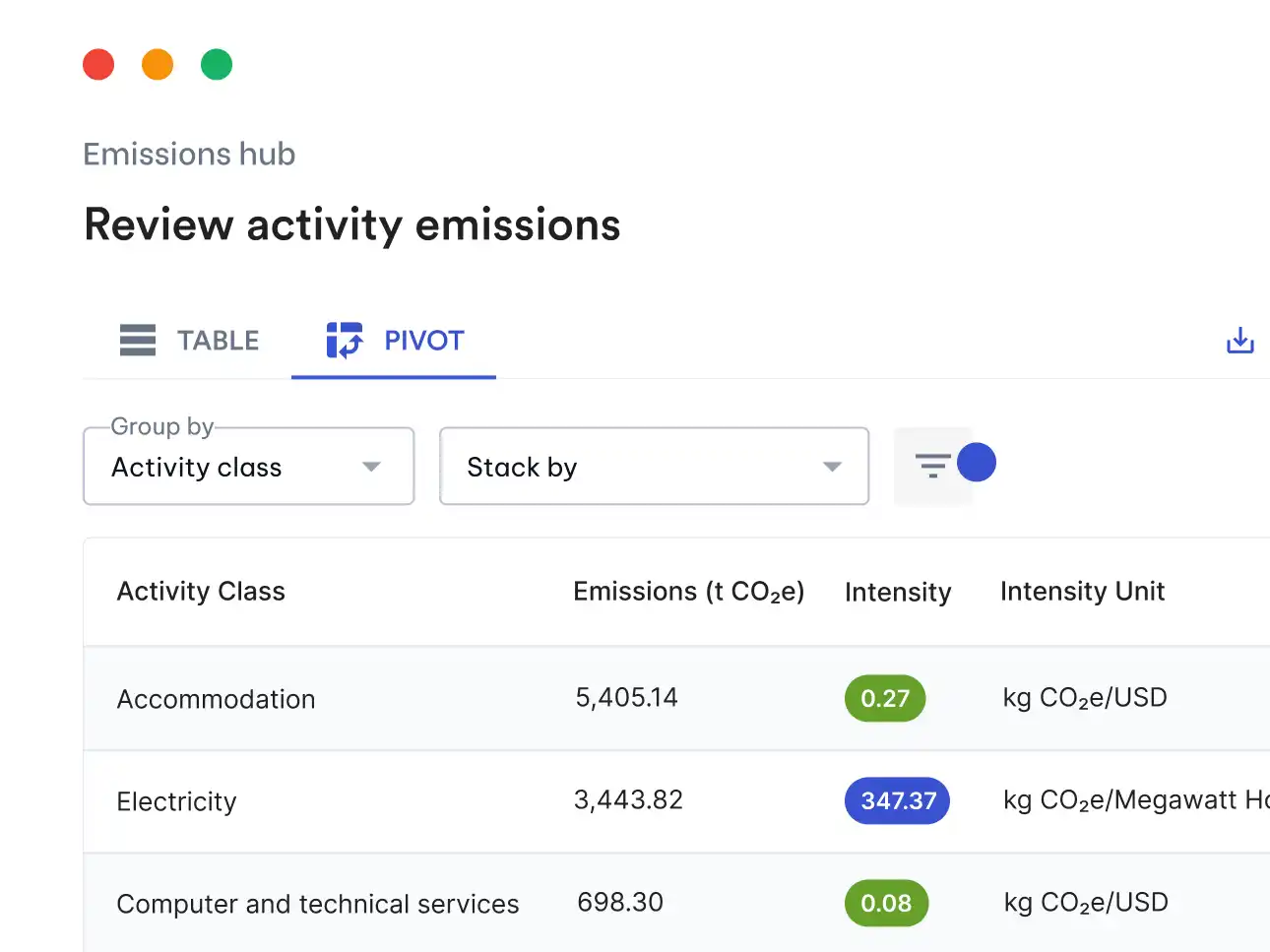As the world becomes increasingly aware of the impact of climate change, businesses are under pressure to reduce their carbon footprint. One way for them to do this, is to start identifying and measuring their carbon emissions. Carbon accounting can be a time-consuming and complex task, but with the right tools, it doesn't have to be. This article will explore some must-haves for any carbon accounting software, which are essential for businesses looking to improve their sustainability practices and reduce their carbon footprint.
What is carbon accounting software?
Carbon accounting software has emerged as a vital tool to help organizations measure, manage, and reduce their greenhouse gas emissions (GHGs) to reach their sustainability goals. It provides tools and features to facilitate the collection, analysis, and reporting of data related to emissions from various sources within an organization's operations.Those various sources can be but are not limited to energy consumption, transportation, waste management, and supply chain activities. It allows organizations to monitor their emissions performance, identify emission hotspots, set emission reduction targets, and implement strategies to mitigate and manage their carbon footprint.
Advantages of using carbon accounting software
There are several reasonswhy an organization should invest in carbon accounting software. Calculating carbon emissions is a slow and complicated process that can take six months or longer. With the right software, organizations can measure their emissions in a few weeks since the relevant process is automated. It also helps organizations meet sustainability goals, comply with emission reporting regulations, improve operational efficiency, identify cost-saving opportunities, enhance stakeholder engagement, and demonstrate their commitment to environmental responsibility. The right carbon accounting software will accurately track emission data and collect valuable insights for an organization and drive effective emissions reduction strategies and contribute to a more sustainable future.
The must-haves for any carbon accounting software:
- Accurate data management and reporting: The carbon accounting software should excel at handling and analyzing vast amounts of data from diverse sources and store it in one place. It should also provide flexible report generation capabilities, allowing users to create and export reports in various formats to suit their specific needs.
- Automated Scope 1, 2, and 3 emissions calculations: Reliable carbon accounting software must cover all three Scopes of emissions (Scope 1, 2, and 3) defined by the GHG protocol. Scope 1 includes direct emissions from sources owned or controlled by the organization, while Scope 2 covers indirect emissions from purchased energy consumption. Scope 3 encompasses indirect emissions associated with external activities like the production of purchased goods and services or transportation.
- Supply chain engagement: By actively involving the supply chain, an organization can get a more accurate picture of its Scope 3 emissions and strengthen the relationship between the company and its supply chain. Other reasons for a company to engage its supply chain are enhanced data accuracy, identifying emission hotspots, promoting collaborations, mitigating risks, and boosting competitiveness.
- Public data sourcing: By pulling all available public disclosures and incorporating real-time data into a company’s emission analysis, organizations can strengthen their carbon accounting practices. It saves time, improves efficiency, facilitates benchmarking against industry peers, ensures regulatory compliance, enhances transparency and offers valuable industry insights.
- Forecasting: The inclusion of a forecasting feature in carbon accounting software is valuable for effective planning, setting realistic emission reduction targets, planning of resource allocation, risk management, scenario analysis, and stakeholder communication. By projecting future emissions, organizations can make informed decisions and contribute to a greener future.
- Compliance with frameworks and standards: In the near future, it will be mandatory for businesses to report their carbon emissions to their private investors and the general public. Therefore, it is essential for carbon accounting software to comply with recognized frameworks and standards such as the GHG Protocol, CPD, GRI, and TDFC. Compliances ensure accuracy, consistency, and comparability of emission data, enhancing the credibility of sustainability practices.
- Integration capabilities: The software should be able to integrate with other systems and software to help streamline data collection and analysis, reducing the time and effort required to input data manually.
- User-friendly Interface: By having a user-friendly interface that is easy to navigate and understand, it becomes more accessible to a broader range of users, including those who may not have specialized knowledge in carbon accounting.
- Scalability: The software should be scalable to accommodate organizations of all sizes, from small businesses to large corporations. The carbon accounting software should handle large amounts of data, support multiple users, and be compatible with different operating systems and devices.
- Security and Privacy: Robust security and privacy features are crucial to protect sensitive emission data from unauthorized access, theft, or misuse, safeguarding the confidentiality and integrity of the information.
Why companies should seek out the right carbon accounting software
Calculating carbon emission is not a new concept. But recently, it has evolved into a crucial industry-standard requirement for numerous businesses. While reporting scope 3 emissions remains optional, it offers several advantages for companies. However, measuring these emissions has become increasingly challenging. Nevertheless, the insights provided by Scope 3 emissions data can significantly improve decision-making processes when selecting resources, equipment, vendors, carriers, and more. This information also enables businesses to establish carbon footprint reduction targets and enhance corporate communications. With the right carbon accounting software, organizations can accurately determine the amount of greenhouse gas emissions generated by their business. This enables them to identify the specific segments of their supply chain responsible for these emissions and uncover relevant opportunities for carbon reduction.
Carbon accounting software like Avarni provides a structured approach to tracking and reporting carbon emissions, which helps businesses identify areas where they can reduce emissions and meet regulatory compliance requirements. Book a call today to learn more and turn your net zero commitments into reality.





